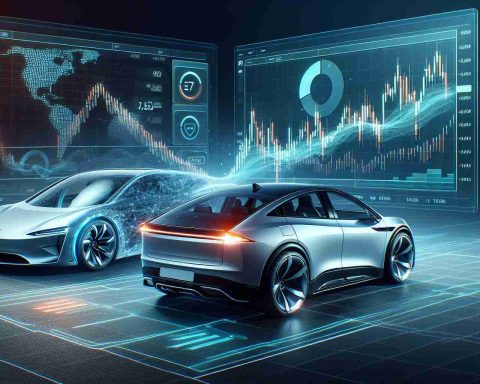The Surge of Electric Vehicles and the Need for Charging Infrastructure
Electric vehicles (EVs) are rapidly becoming a dominant force, with 14 million new units introduced worldwide in 2023 alone. This surge brings the total global count to about 40 million EVs. Projections by the International Energy Agency (IEA) predict that annual sales could soar to 45 million by 2030, markedly increasing the demand for accessible charging stations.
Initially, most EV owners preferred home charging, but the limitations of public charging networks have become evident. In places like the United Kingdom, over 90% of electric car owners charged at home in 2021. To enhance the appeal of EVs, it’s crucial to establish widespread public charging options, particularly in urban environments. Essential features for these stations include easy access, user-friendliness, fast charging capabilities, and transparent pricing.
Currently, China leads the world in public charging infrastructure, accounting for 70% of global charging points in 2023. However, challenges remain in profitability and the need to enhance rural and suburban coverage. Meanwhile, Europe aims to expand its public charger count to 2.7 million by 2035, while the United States plans to drastically increase its installations to 500,000 stations by 2030.
An efficient charging network, energized by public and private investment, is crucial for the sustainable growth of the electric vehicle market. As EV adoption increases, the infrastructure must evolve to ensure reliable and widespread access.
The Future of Electric Vehicle Charging: Key Insights and Innovations
The Growing Need for Electric Vehicle Charging Infrastructure
The rise of electric vehicles (EVs) has triggered an unprecedented demand for charging infrastructure worldwide. With 14 million new units hitting the roads in 2023, the total global vehicle count has reached approximately 40 million. According to projections from the International Energy Agency (IEA), annual EV sales could escalate to 45 million by 2030, necessitating an expansion of accessible and user-friendly charging stations.
Features of Ideal Charging Stations
To make EV ownership more appealing, public charging stations must incorporate essential features:
– Easy Access: Charging stations should be strategically located near busy areas, making it convenient for both urban and suburban drivers.
– User-Friendly Interfaces: Intuitive designs that simplify the charging process can significantly enhance user experience and encourage more people to switch to EVs.
– Fast Charging Capabilities: Quick charging solutions are vital. The average time to charge an electric vehicle should be minimized to allow drivers to quickly resume their journeys.
– Transparent Pricing: Clear and consistent pricing models are essential for building consumer trust and usage frequency.
Comparison of Global Charging Infrastructure
China currently dominates the landscape, boasting approximately 70% of the global charging points as of 2023. Despite this expansion, challenges such as profitability and coverage in rural areas persist. In contrast, Europe aims to increase its public charging network to a total of 2.7 million by 2035, while the United States is ramping up its charging installations significantly, targeting 500,000 stations by 2030.
Market Trends and Innovations
The electric vehicle sector is rapidly evolving, with several notable trends and innovations on the horizon:
– Wireless Charging Technology: As research and development in wireless charging progresses, the introduction of inductive charging pads could eliminate the need for physical plug connections, enhancing convenience.
– Smart Charging Solutions: The adoption of smart charging systems that can communicate with the grid and optimize energy use during off-peak hours is becoming increasingly essential for managing demand.
– Battery Swapping: This alternative approach to charging involves exchanging depleted batteries for fully charged ones at designated stations, potentially reducing charging times significantly.
Sustainability and Environmental Considerations
The expansion of charging infrastructure goes hand-in-hand with sustainability efforts. As electric vehicles produce fewer emissions than traditional gasoline cars, increasing the number of EVs on the road can significantly decrease urban air pollution. However, it is vital for the energy used in charging these vehicles to come from renewable sources to maximize environmental benefits.
Limitations and Challenges
Despite the enthusiasm surrounding EV growth, limitations remain:
– Initial Costs: High investment requirements for public and private stakeholders can slow the deployment of charging stations.
– Infrastructure disparities: There is often a stark contrast in EV infrastructure availability between urban and rural areas, which can hinder widespread adoption.
Insights and Future Predictions
Looking ahead, as new manufacturers enter the market and existing companies invest in technology, the competition in EV infrastructure will likely drive innovation, enhance service quality, and lower costs. Anticipated developments within the next decade may reshape how consumers interact with charging stations altogether.
For comprehensive insights into electric vehicle trends and sustainability efforts, visit IEA for the latest research and projections.








